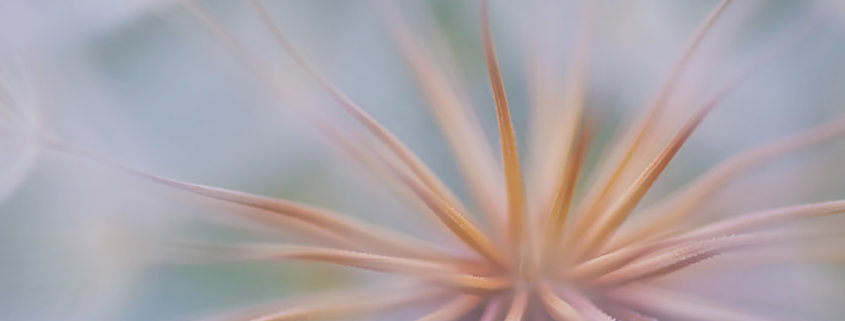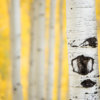Getting Started with Narrow Depth of Field Photography
Using narrow Depth of Field (DOF) is one of my favorite ways to create abstract renditions of subjects in nature, including plants, cacti, and leaves as you will see featured in this post. Using narrow depth of field essentially means working with a very narrow slice of focus. When you photograph a flower using high depth of field, the resulting photo will feature a realistic rendition of a flower. On the other hand, using narrow depth of field helps take an everyday subject and transform it into a study of colors, lines, shapes, textures and other abstractions. This type of photography is also a lot of fun because it involves experimentation and can often produce surprising results.
A Quick Primer on Aperture and Depth of Field
Aperture is the technical term that refers to the size of the hole allowing light through your lens. Selecting different apertures helps a photographer control the depth of field in the resulting photograph with depth of field referring to the zone of a photograph that appears to be in sharp focus. A large f-number, like f/16, refers to a small hole and translates into greater depth of field, with more of the subject appearing in focus. A small f-number, like f/2.8, refers to a larger hole and translates into less depth of field with less of the subject appearing in focus.
Here is an example of the same subject photographed at f/16 and at f/2.8, both RAW files with no adjustments. You can see that the photo on the top shows a much deeper depth of field with more of the scene in focus. On the bottom, the scene has significantly less depth of field with only a small slice of focus.

These sample photos show the difference between a photo taken at f/16 (top) and f/2.8 (bottom).
Here are four tips for getting started with low depth of field photography:
1. Start with a Small F-Number, like f/2.8 or f/4
The first step in taking photographs with narrow depth of field is setting your aperture to the smallest f-number for your lens. This is the most important step in starting to experiment with narrow depth of field. For example, when I am photographing plants using narrow depth of field, I will often set my camera to aperture priority and choose f/2.8 on my Canon 100mm macro lens. Like I discuss below, I often handhold my camera when taking the kinds of photos featured in this post. By using aperture priority and selecting an appropriate ISO for the situation, I can let my camera do most of the work in selecting the exposure settings. Then, I can focus more of my attention on things like focusing and composition.
2. Try Hand holding Your Camera
While I almost always photograph using a tripod, taking the types of photos featured in the post often requires laying on the ground, standing in an awkward position, and getting quite close to my subject. In these cases, it is sometimes impossible or too cumbersome to use a tripod, so I increase my ISO and handhold my camera. This allows me to make very fine adjustments to my focus while constantly looking through my viewfinder. This approach also makes experimentation a lot easier since it is quicker to move around. With the exception of the photo of aspen leaves, I handheld my camera for each of the photos included in this post. This is because using a tripod in each of these scenarios would have been difficult.
3. The Focus Point Can Make a Big Difference
When you are working with very thin slices of focus, a tiny change can make a big difference in the feel of the resulting photograph. Thus, it can be helpful to experiment with different focus points to see which result you like the best.
When you are starting to experiment with narrow depth of field, spend some time working with a single subject. Slowly move your focus ring on your lens and observe how much the result changes based on what part of a subject is in focus. Take sample photos at each of these focus settings. Then, compare your results on a larger monitor to see what you like and do not like. This kind of practice will help you learn how choosing your focus point is essential when using narrow depth of field, and can often result in happy surprises when you see a subject rendered in an interesting and unexpected way.
4. Experiment Extensively
It took a lot of practice for me to start getting good results when I started experimenting with narrow depth of field. At the time, I had a garden of perennials in my backyard. Without any goals in mind, I would go out into my yard and practice for a few hours at a time. I tested out different lighting conditions and learned what types of backgrounds can work best (often simple, shaded, and fairly uniform in color). I also practiced with focusing and handholding to improve my technique. Over time and with hundreds of failed exposures for practice, I started to understand what approaches worked best. Ultimately, I was able to begin developing a portfolio of photos like those you see here. These photos do not come easily so do not get frustrated with early failures. Instead, learn from the experience and apply what you learn to improve.
Please Share Your Tips
Do you have some tips for getting started with narrow depth of field for nature photographers? If so, please share your tips below and thank you for reading!








 Jaclyn Tanemura
Jaclyn Tanemura





The pipe cactus, yucca plant, and salsify plant appear to be macro shots to me. If you are using a 100mm macro lens, is it a prime? I’m gonna have to experiment since I use a micro fourthirds camera and extension tubes. I also use older lens mounts from Nikon, Canon and Olympus. MFT’s cameras are notorious for a smaller DOF, especially with my 35mm lenses using an adapter. Ive done alot of macro flower shots because of the patterns that are seen close up but not while you look at them from the naked eye. I think maybe that Queen Anne’s Lace and Dandelions will be good subjects for a limited DOF.
When I was so focused on the detail of the hidden patterns in nature I never thought of using her beauty as an abstract. So I thank you for making me aware of this.
Regards,
rs
Thanks, a great and useful article.
Stunning photos! I appreciate you confessing that it has taken you a long time and many shots to perfect your technique. It makes me feel better about all of my own failed attempts!
Sarah, Lovely, lovely shots and great advice. I particularly like the willows and yucca plant. My wife and I are going to the Smoky Mountains to shoot wildflowers the first week of April, so this is extremely timely for us. Thank you for some good suggestions. We’ll start practicing on our daffodils…Bruce